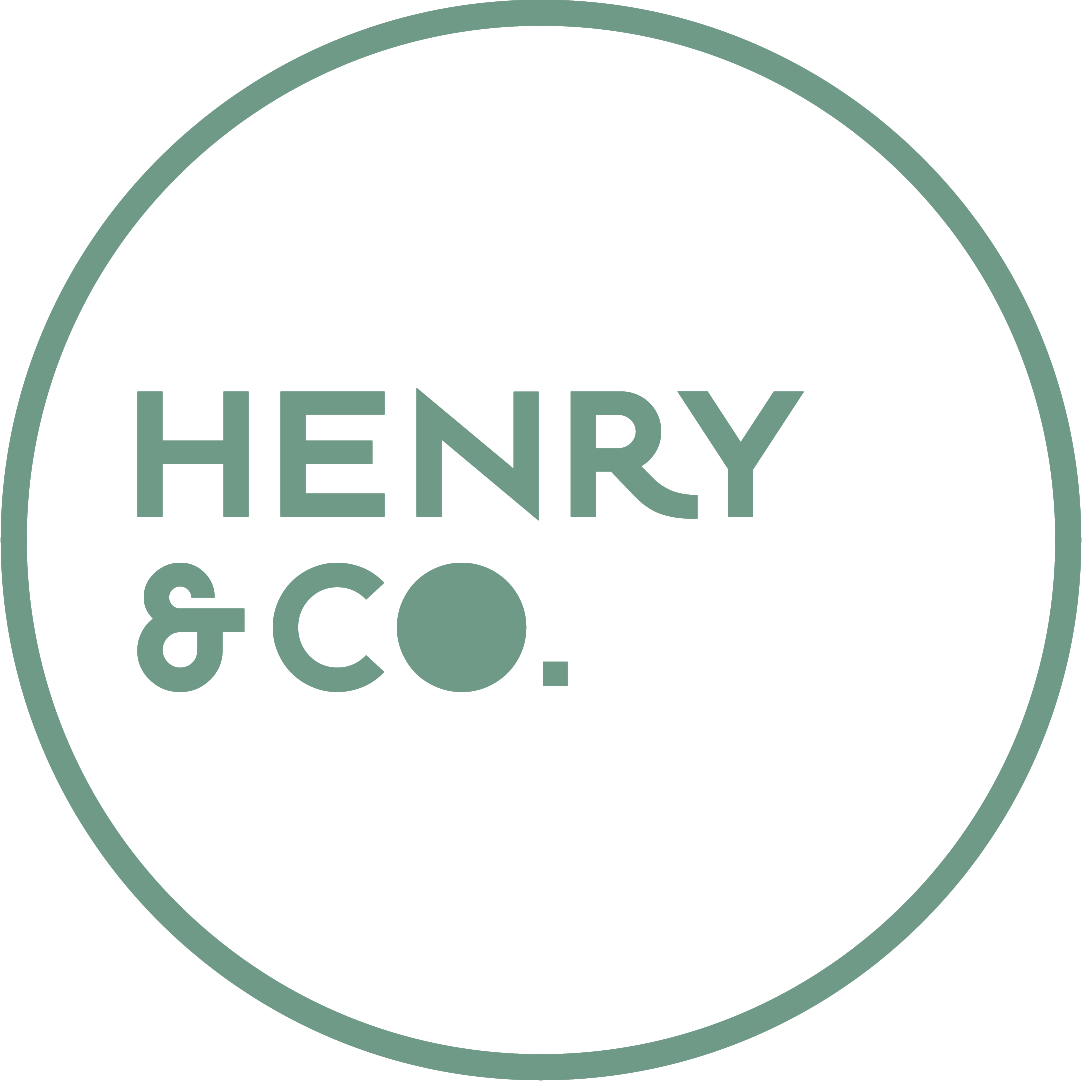Upcycling is a sustainable design approach that involves the reuse of unsold and/or waste objects, components, and materials. It is a practice that companies adopt as a design method that aligns with circular economy business models and practices.
It is therefore a highly valuable opportunity for businesses as it allows them to exploit waste from which it would otherwise be impossible to derive utility and profit. If you’re wondering how this is possible, keep reading this article. Through our experience in reuse design projects, we at HENRY & CO. will explain what reuse design is, the benefits of reinventing objects and materials for companies, and successful and innovative examples!
1. What is upcycling?
1.1. Upcycling: a definition
To know what upcycling is, we need to go back to 1994, when R. Pilz, a German mechanical engineer, used this term during an interview with Salvo magazine:
“I call recycling down-cycling. Bricks are broken, everything is broken. What we need is up-cycling, where old products are given more value, not less.”
Upcycling (which can be translated into Italian as “enhanced recovery”) is a sustainable design method for new products based on the recovery and reuse of what companies already own. The starting point for this approach to reuse design is the use of unsold and/or waste products, components, and materials, which extend their lifespan and promote recirculation (a key element of the circular economy). The result is internally used or sellable products that are creative, innovative, and different from their original state, with new and increased value.
1.2. What is the difference between upcycling and recycling?
Upcycling and recycling are two different sustainable design approaches that, while both based on the use of existing materials to avoid producing more for the creation of new products, involve different production and processing methods.
In fact, recycling requires material transformation to produce new objects. These operations are often only repeatable a limited number of times, as they cause some material degradation and can have a potentially significant environmental impact (just think of the recycling process for plastic or glass).
Upcycling, on the other hand, involves no such transformation: in other words, new products are made without modifying the original materials, so the processes have minimal environmental impact and can be repeated indefinitely.
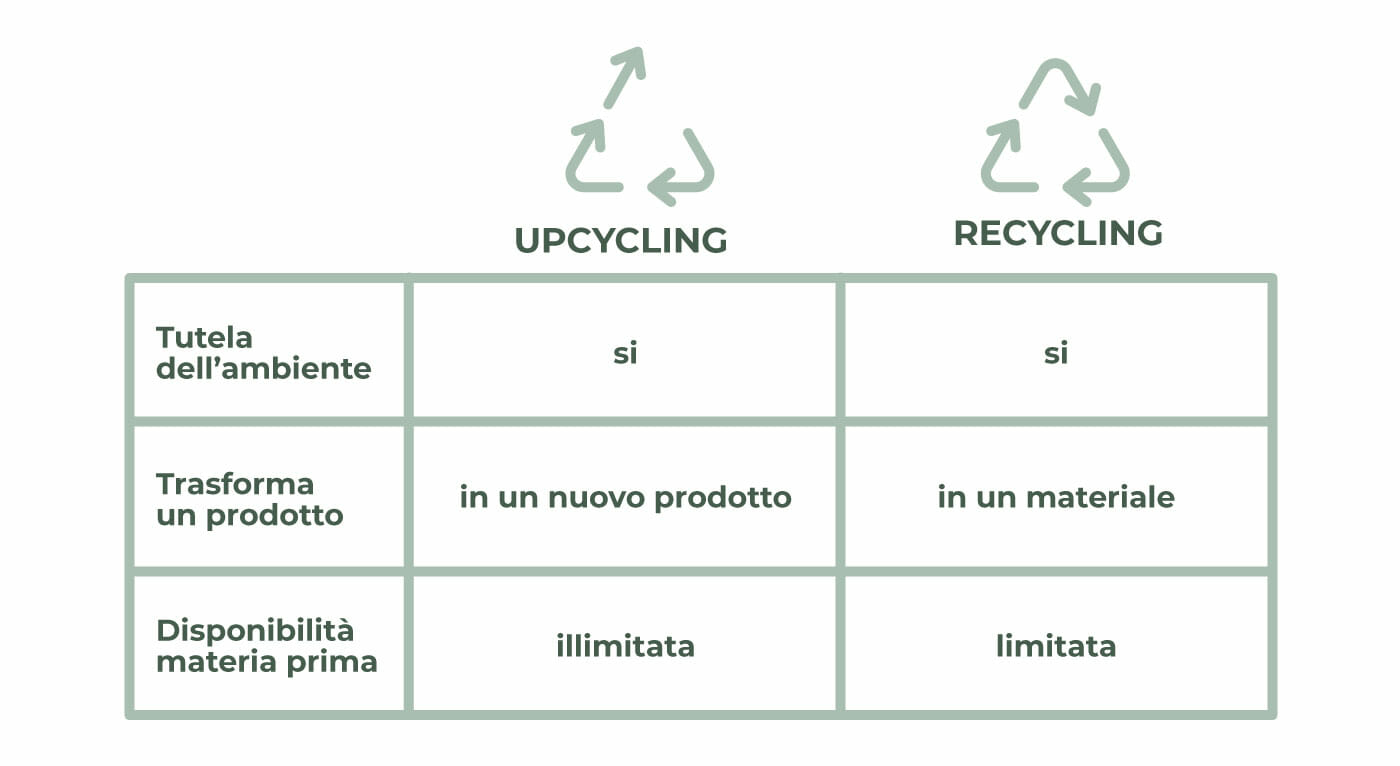
1.3. The benefits of upcycling for companies
The benefits of upcycling for companies are:
- possibility to make profits from product, component, or material leftovers and waste by generating higher-value objects for the market or internal use;
- reduced environmental impact, pollution, and waste by putting already used materials back into circulation;
- less expensive and less polluting production processes, which also allow savings in terms of raw material usage;
- new business opportunities arising from expanded offerings and the chance to enter new markets;
- the creation of original, innovative products aligned with the tastes of consumers who are increasingly conscious of circularity and sustainability;
- promotion of circular production processes and responsible consumption behaviors, which institutions are increasingly recognizing as important.
2. What are the most suitable materials for reuse?
There are no strict limits on the types of materials suitable for reuse. Unsold clothing or other textiles, unused furniture, or objects with production defects are all examples of items that can be reinvented in original ways to create market value or for internal use. The potential of reuse design is virtually limitless, and companies of all kinds and sectors can benefit from it.
However, upcycling requires not only creativity and innovation but also a deep understanding of the available materials and the opportunities they offer. This makes it not just an imaginative exercise but a thoughtful action truly capable of creating value for companies in a sustainable way. If you want to give a second life to your unsold inventory, scraps, or leftovers, all you need to do is contact us: at HENRY & CO., we’ll help you develop the design project that best meets your needs!
3. Are there examples of reuse design and upcycling?
Upcycling is increasingly being adopted by companies in various sectors, with different stages of development and sizes, successfully seizing the opportunities for development and innovation that arise from this approach, which is fully in line with the circular economy principles.
Let’s now look at some examples of initiatives and companies inspired by the principles of reuse, recirculation, and recovery of existing materials, objects, and components to generate new value for companies and consumers.
3.1. Levi’s® x Miu Miu
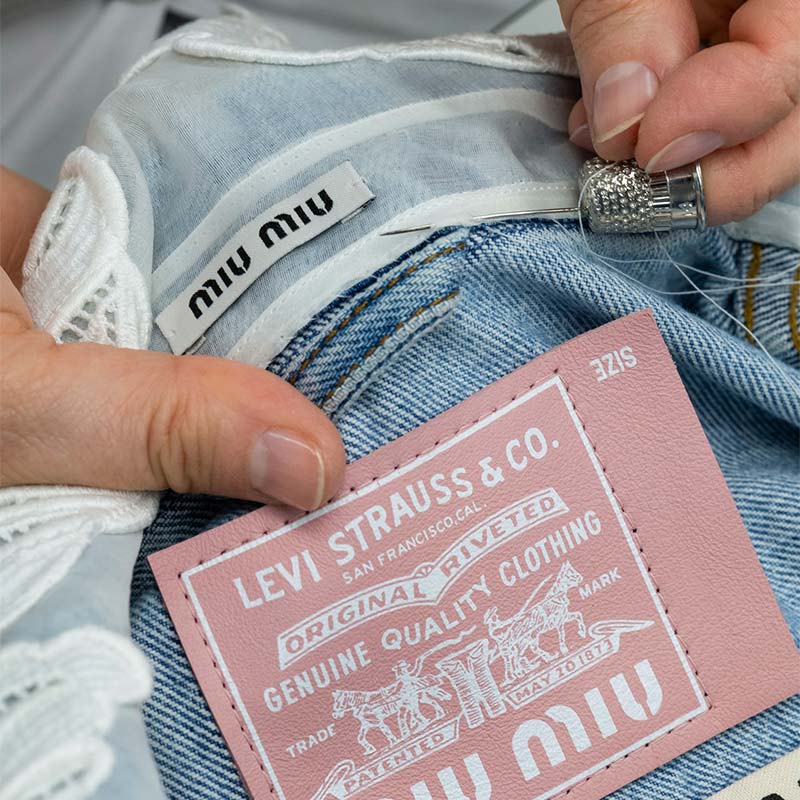
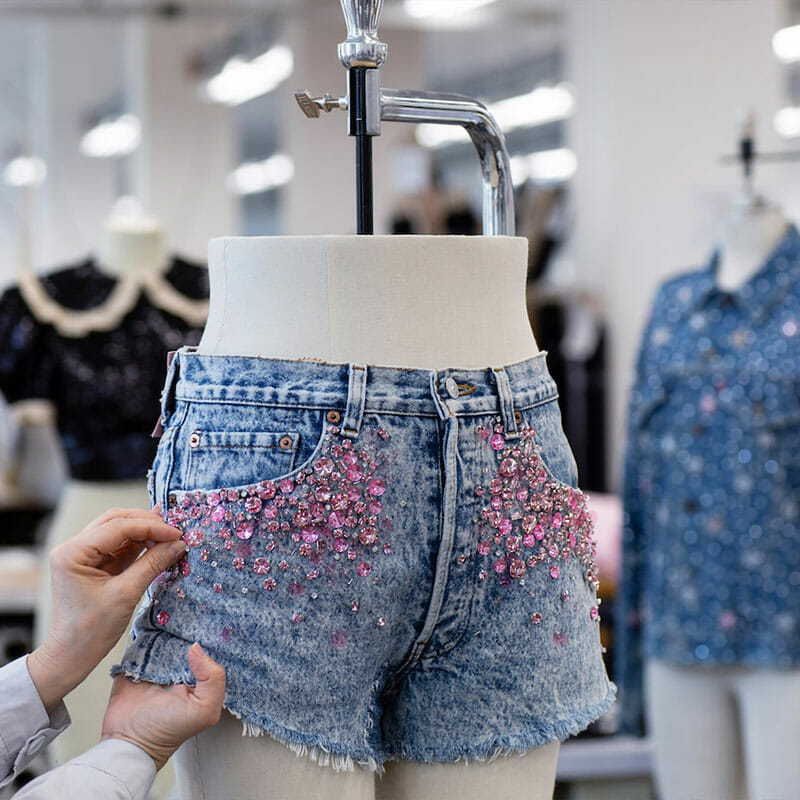
In the fashion industry, generally considered among the most polluting, there is a growing number of companies embracing sustainable production and consumption practices, including reuse. For example, Levi’s® and Miu Miu collaborated on the Upcycled by Miu Miu line. Specifically, they worked together to create a selection of pieces starting from men’s pants and vintage denim jackets (from the 1980s and 1990s) that were used by the American company, reworked and refined by the Italian brand with unique and original details.
3.2. Mielizia
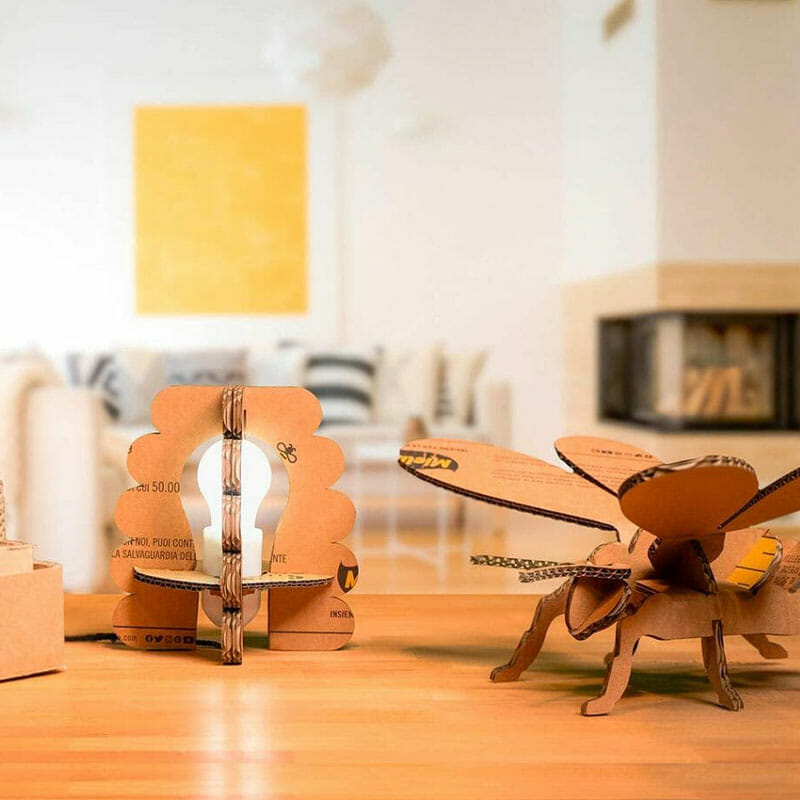

The Mielizia shipping box designed by us at HENRY & CO. is another example of how to involve consumers in reuse design projects, considering the popularity of trends like creative recycling and DIY. Specifically, we developed, by evaluating the potential combinations of the box’s internal and external components (which are monomaterial, made of 100% cardboard), three different reuse options: the box can easily become a desk organizer, a lamp, or a bee.
3.3. Samsung’s Galaxy Upcycling Program


The versatility of reuse design is such that the approach can even be applied in fast-paced sectors like technology, where more and more companies are searching for solutions to tackle the problem of e-waste. For instance, Samsung developed the Galaxy Upcycling Program, aimed at enabling consumers to repurpose old Galaxy smartphones with new functionalities. As part of the Galaxy Upcycling at Home initiative, for example, these devices can be converted into IoT devices for home use through a software update.
3.4. Looptworks and the NBA

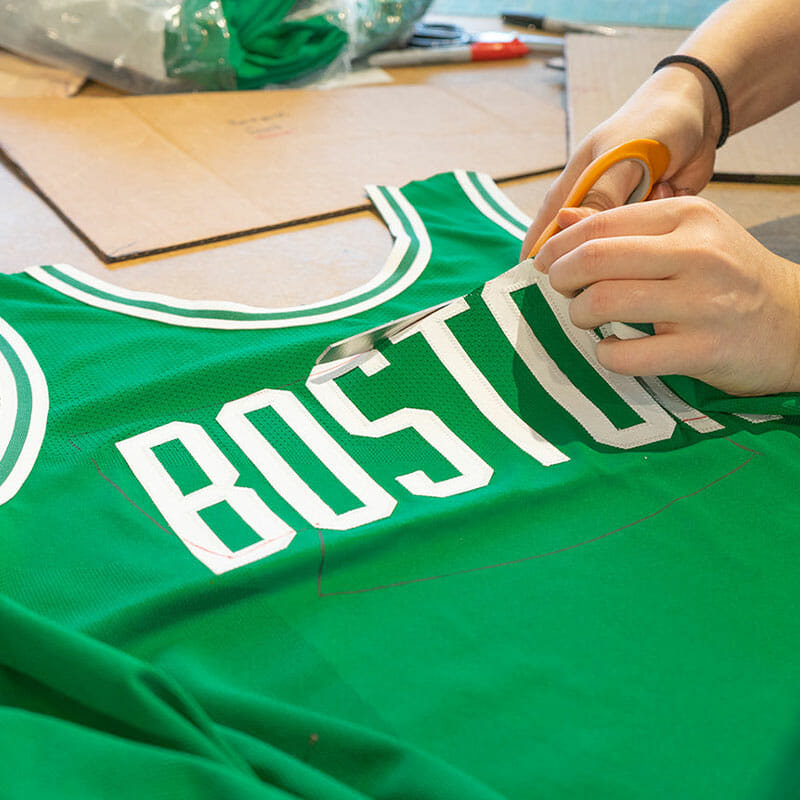
In the collaboration between Looptworks and the NBA, upcycling is also the focus for creating unique and low-impact products for fans by recycling and repurposing original jerseys designed for fans that can no longer be sold, perhaps because of player retirements or trades. These materials, destined to become waste, are given a new life. Deconstructed and reimagined, they are turned into fanny packs, backpacks, and pillows featuring the teams’ colors and symbols.
4. Reuse design: how can HENRY & CO. help you develop upcycling projects?
To generate maximum value from upcycling, companies need partners capable of supporting them both in understanding materials and in designing products for the market or internal use, while also capitalizing on the resulting opportunities for sustainable growth and innovation. If you want to reuse or recover unsold products, materials, or components, from HENRY & CO., we can help you develop the upcycling project that best suits the characteristics and goals of your business! Contact us to learn more.
